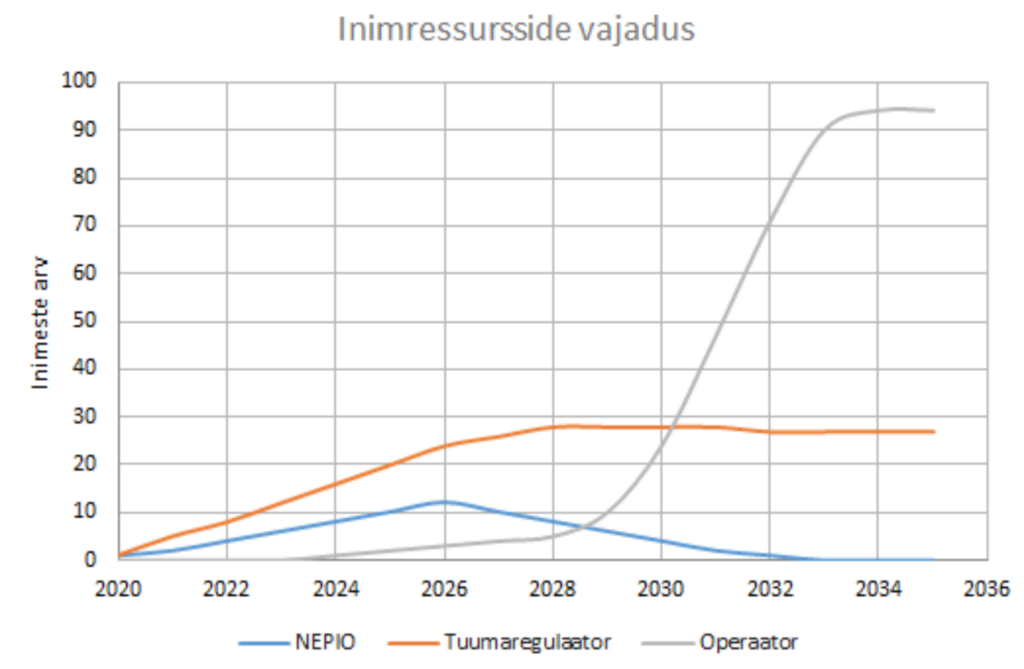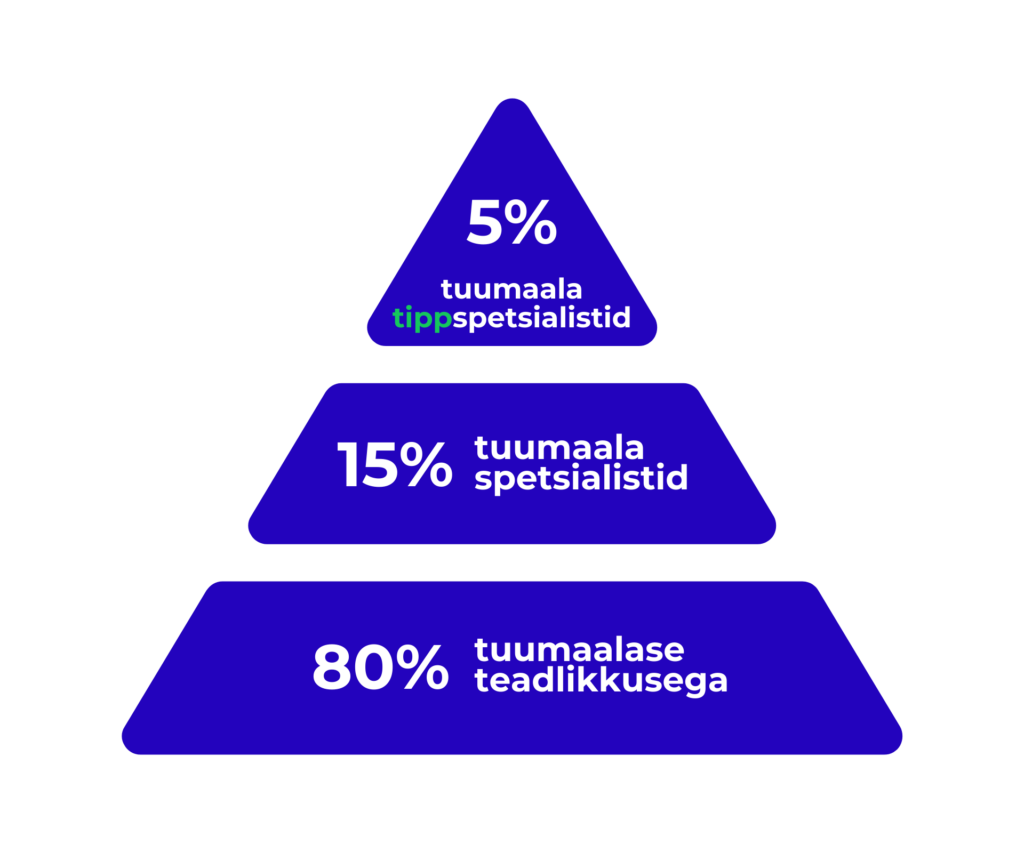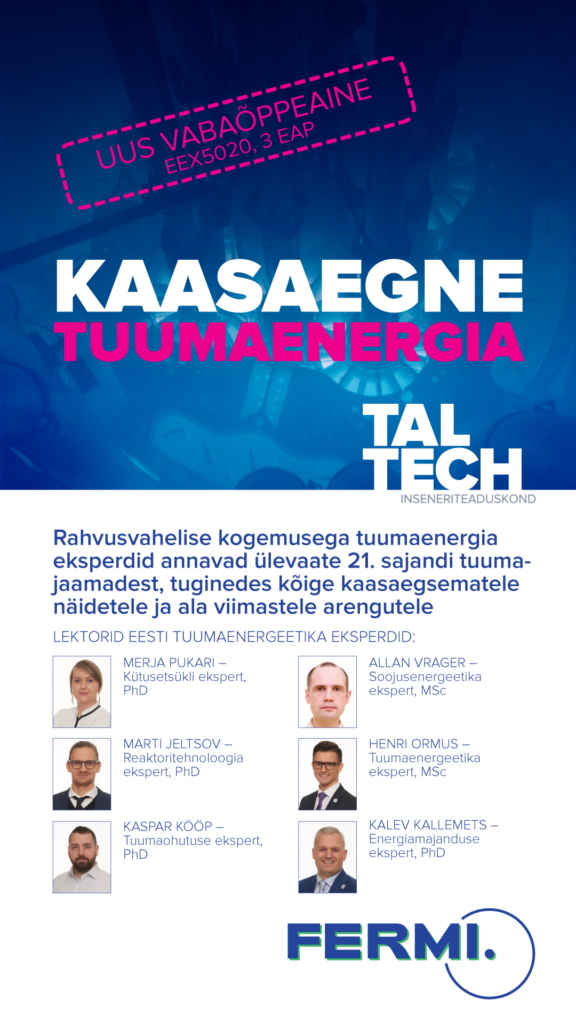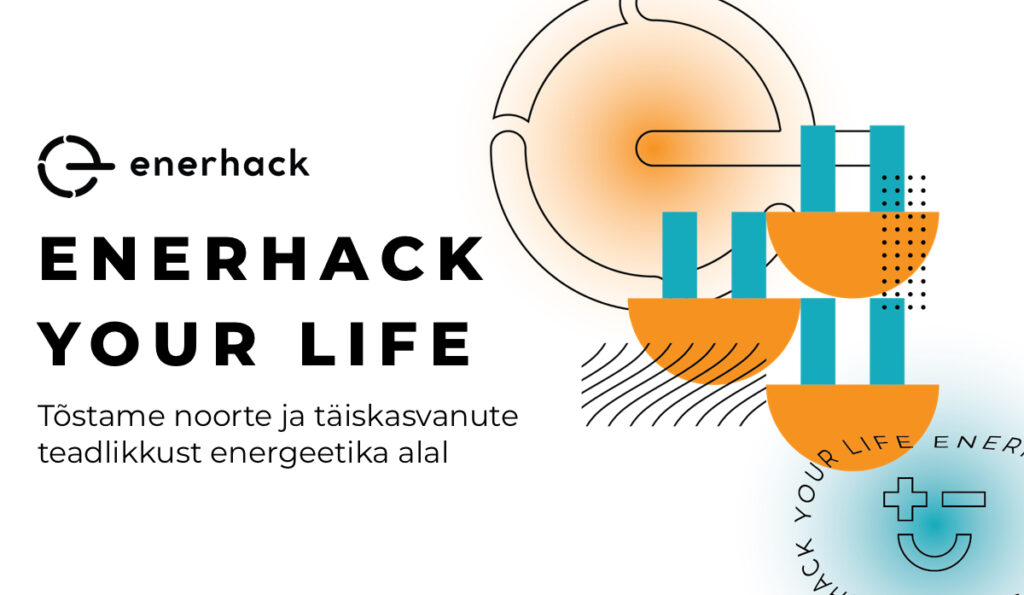Our contribution to nuclear education and competence building
The development of competences is a long and time-consuming process to which we are already contributing with scholarships for master's studies at foreign universities well as domestic summer schools and the free courses for modern nuclear energy at TalTech.
Unfortunately, it will not be possible to train the entire nuclear sector with the will of the private sector alone. It is important that the public sector also contributes, because education and research benefit the whole Estonia, not just the builders and officials involved. New well-paid jobs in the high-tech sector, tax revenues from this sector, revenues for the state budget both at the plant construction and power generation stage, reduced electricity imports, increased energy security and contributing to reaching climate targets are just a few of the positive effects for the Estonian state.
Experts are needed by both the operator and the national supervisor
First of all, there is a need for competent people to join the team of the future operator, a company developing the project (estimated at 70-150 people). The second largest and most important organisation from a national point of view is the nuclear regulator, the National Supervisory Authority (estimated at 30-50 people). For example, the Slovenian Nuclear Regulator employs just over 40 people to supervise the 700MWe Krško nuclear power plant. The amount of resources needed in universities and research institutes will depend on the strategy to be chosen, whether and to what extent we want Estonia to have a nuclear research capability.
In addition to the above, a certain level of competence and relevant knowledge is also needed in ministries and other government departments and agencies where staff already exist (e.g. ambulance, fire brigade, police). In addition, there are also potential Estonian construction companies and suppliers of components.
Tuumaenergia poliitika väljatöötamine tähendab praktikas Majandus- ja Kommunikatsiooniministeeriumi energiaosakonda ja Keskkonnaministeeriumi kliima- ja kiirgusosakonda täiendavate inimeste palkamist ning täiendväljaõpet. Planeeringute läbiviimise pädevus on Rahandusministeeriumis ja teistes asutustes juba olemas. Planeerimistegevuse ja keskkonnamõju strateegilise hindamisega seotud kulusid on Fermi Energia kui huvitatud osapool kohustatud ja valmis katma.
After the decision in principle in favour of the nuclear option, the national regulator and/or the relevant areas of the Environment Agency and the Nuclear Safety Authority will also need to be staffed.


There are a number of different international organisations and programmes that provide support to countries and institutions wishing to develop nuclear energy. One of the most important of these is certainly the International Atomic Energy Agency, which assists Member States with various guidelines, training programmes and expert missions. World Association of Nuclear Operators (WANO) korraldab erinevaid koolitusi ja “peer-review” programme. Tuumaregulaatorite koostööorganisatsioon WENRA (Western European Nuclear Regulators Association) aitab tagada, et tuumaohutus oleks ühtlaselt kõrgel tasemel liikmesriikides üle maailma. On veel palju muid organisatsioone ning koolitus- ja abiprogramme. Lisaks on olulisel kohal ka riikidevahelised koostööprogrammid, näiteks naaberriikide vahel. Kui ollakse projektiga nii kaugel, et valitakse juba konkreetne reaktoritehnoloogia, siis antud tehnoloogia tarnija aitab välja koolitada insenerid ja täpsema tehnilise teadmise konkreetse disaini eripärade ja nüansside kohta, viies läbi ka tulevaste operaatorite koolitused tagades nii, et vajalik pädevus on olemas ajaks kui seda on vaja.



